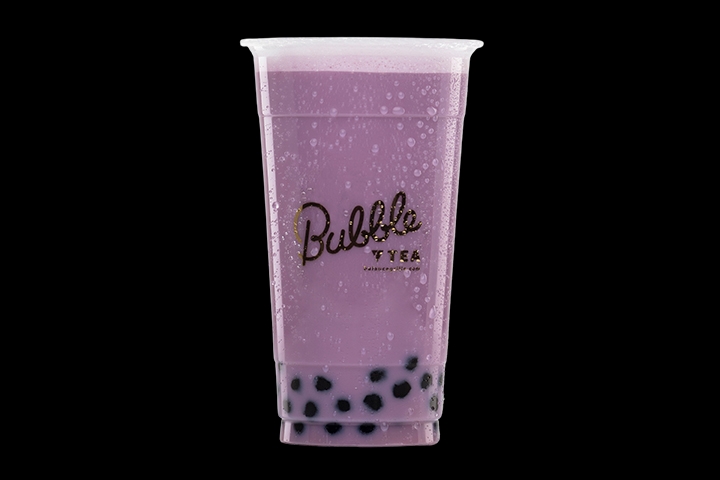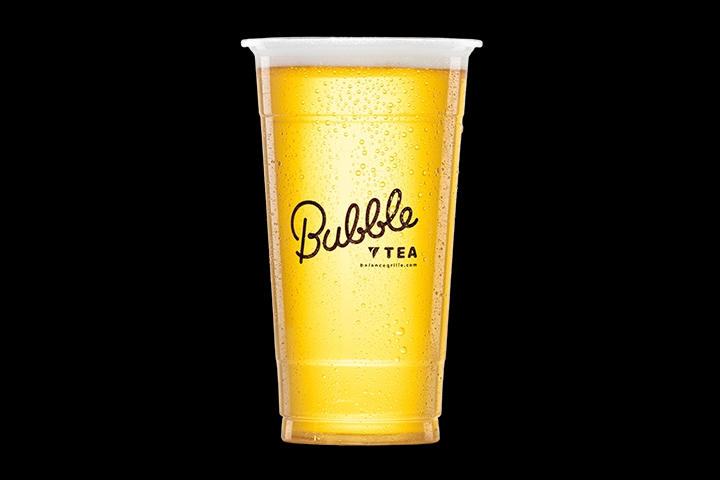The Science Behind the Perfect Bubble Tea: What Makes It So Addictive?
There’s something about bubble tea that always leaves people wanting more. From the first sip—whether it’s icy, creamy, or rich with a milky texture—to the satisfying chew of sweet pearls, every element keeps you coming back for more. At Balance Grille, we aim to take each bubble tea moment to the next level.
Also known as boba or pearl tea drink, the popular beverage originates from the 1980s in Taiwan. In 1988, a product development manager named Lin Hsiu Hui, who worked with Liu Han-Chieh, the owner of a tea store called ‘Chun Shui Tang,’ thought of combining a Taiwanese dessert called ‘fen yuan’ (sweetened tapioca pudding) with tea.
Furthermore, deciding to serve tea cold instead of hot, the unique boba was born. The recipe’s most sought-after ingredient, boba pearls, eventually became a distinctive part of the drink when a young entrepreneur named Tu Tsong decided to add a traditional Taiwanese snack, tapioca balls, into the recipe. The rest is history.
It didn’t take long for boba to spread beyond Taiwan, making its way to bustling streets in Hong Kong, Japan, and eventually to places like glitzy cafés in New York to fiery street stalls in Bangkok. Its global success is fueled by a mix of nostalgia, social media, and the ever-growing love for unique, flavorful drinks.
But what makes it so irresistible? Is it the perfect balance of everything that makes up tea? Or is there a rationale behind why we just can’t get enough? Let’s dive into the science behind what makes boba so addictive.
The Key Ingredients That Make Bubble Tea Irresistible
What makes boba tea so impossible to resist? It’s not just one thing. If you’re looking for the best bubble tea flavours, let’s start with the tea base.
Whether it’s bold black tea, floral jasmine green, or the scent of oolong that makes you stop in your footsteps and relax, the base of the tea sets the stage for the entire drink. Black tea packs the best bubble tea caffeine content and a malty depth, while green tea brings a grassier touch, perfect if you’re looking for a soothing start to your day. Oolong falls somewhere in between, with a hint of earthiness that grounds you in absolute heaven.
Then, there’s the creaminess factor. Traditional boba teas utilise milk in their recipes to achieve that classic smooth, velvety texture. However, non-dairy options add their unique twist. Take oat milk, for example. It has a creamy, slightly sweet flavour, combined with a toasty, bold aftertaste that pairs beautifully with black tea.
Sweetness levels are highly personal, too. From honey to brown sugar syrup, boba lets you dial it in just right. Too much sugar can overpower our teeth, and too less makes the recipe bland—balance thus becomes everything.
Just like in the 1980s, the toppings are the real game-changer. Ranging from chewy tapioca pearls, juicy popping boba, and refreshing jellies, toppings add variety and create contrast with every chew. The way textures collide in every sip? That’s where the magic happens.

The Science of Texture: Why We Love Chewy Textures
There’s something oddly satisfying that bursts in our mouths once we take that first bite of a chewy, bouncy tapioca pearl. Our brains are wired to enjoy foods that require a little extra work. Chewing activates more senses and serves as exercise for our jaw muscles and face joints, thus engaging us in the eating experience on a raw level. In the case of boba, it’s mostly drinking—or combined, whatever you see fit; that’s part of what makes boba so addictive.
The “bite” of the tapioca pearls results in a sensation termed as mastication pleasure—a fancy way of saying that our brains enjoy the repetitive motion of chewing. It creates a small but enjoyable reward loop for our nervous system, kind of like popping bubble wrap but way more delicious.
Plus, boba is one of the few drinks that successfully blends liquid and solid in a single sip. The smooth, creamy tea (the liquid) rushes in first, followed by the chewy pearls (the solid) that add an entirely new dimension and make every sip unique.
Caffeine & Sugar: A Stimulating Combo
If drinks had a social hierarchy, boba would reign as the ultimate pick-me-up. Regarded as a stimulating combo, if you want to stay alert without overdoing it, boba is the perfect middle ground between coffee and energy drinks. Adding caffeine to its tea base gives you that gentle energy boost without the jitters. Black tea packs a bold wake-up call, while green and oolong teas offer a smoother, more gradual lift.
Sugar triggers dopamine release, giving us that instant hit of happiness. It’s why a perfectly balanced boba—just the right amount of sweetness, paired with caffeine—ends up satisfying. Unlike the bitter tang of coffee or the plastic-like aftertaste of energy drinks, boba is gentle towards your body to stay refreshed and focused.

Customization & Social Experience: The Bubble Tea Culture
Bubble Tea at Balance Grille is always a personalized experience. With endless options for tea bases, sugar levels, and choices between milks and toppings, no two experiences are ever the same.
However, boba’s appeal goes beyond creating a core memory. Shops have become social hubs that buzz with energy as friends (and potential relationships) gather over their favorite drinks. And let’s be honest—boba is made for the camera. From eye-catching colors to aesthetic packaging, it’s a drink that looks just as good on Instagram as it tastes in person.
Want your next delicious bubble tea? Head over to our stores Head over to our store in Toledo, Sylvania, Cleveland, or Perrysburg. We are ready to serve a fresh glass!
How to Make the Perfect Bubble Tea at Home
Confused about making boba at home? Not to worry! Stay excited and locked in, because we’ve got a no-brainer, step-by-step guide to help you through it!
- Choose your preferred tea base—black, green, or oolong. Once chosen, steep 2-3 tea bags in hot water for 5 minutes, then let it cool.
- Boil water and add the pearls, stir to prevent sticking. Once the pearls float, cook for an additional 2-3 minutes to gain a chewy texture. Drain and rinse under cold water.
- Toss the cooked pearls in brown sugar or honey to enhance their flavor.
- In a glass, combine the cooled tea, your choice of milk (dairy or non-dairy), and sweetener to taste.
- Add the pearls, ice, and stir well.
For the ideal chewiness to engage your senses to the maximum, use quick-cooking tapioca pearls and follow the package instructions closely. It is also recommended to adjust the sweetness-to-milk ratio to your taste preferences.
To buy bubble tea ingredients, you can look for Asian grocery stores, which often carry tapioca pearls and boba essentials. If the ingredients are unavailable near you, online retailers like BossenStore.com offer a wide selection of boba supplies.
The Future of Bubble Tea: Trends & Innovations
Like every recipe that lives to this day, bobas also evolve. Health-conscious versions are taking center stage—think less sugar, oat milk alternatives, and functional ingredients like collagen and probiotics. Toppings like cheese foam bring a savory twist, whereas brown sugar boba offers a caramelized flavor, and fruit-based jellies add a refreshing burst. With the push for paper straws and biodegradable cups, boba is becoming greener without sacrificing convenience. The future isn’t just about taste—it’s about innovation and responsibility.
It’s boba, but smarter for the world today.
Final Sip—Why We Can’t Get Enough of Bubble Tea
Bubble tea is the full package—it’s science, sensation, culture, joy, and a moment within itself. It keeps us coming back with that perfect balance of cream and sweetness, while the chewy, bouncy texture of tapioca balls relaxes us on a whole other level.
Ready to sip on something incredible? Explore Balance Grille’s boba lineup and find your new favorite.
